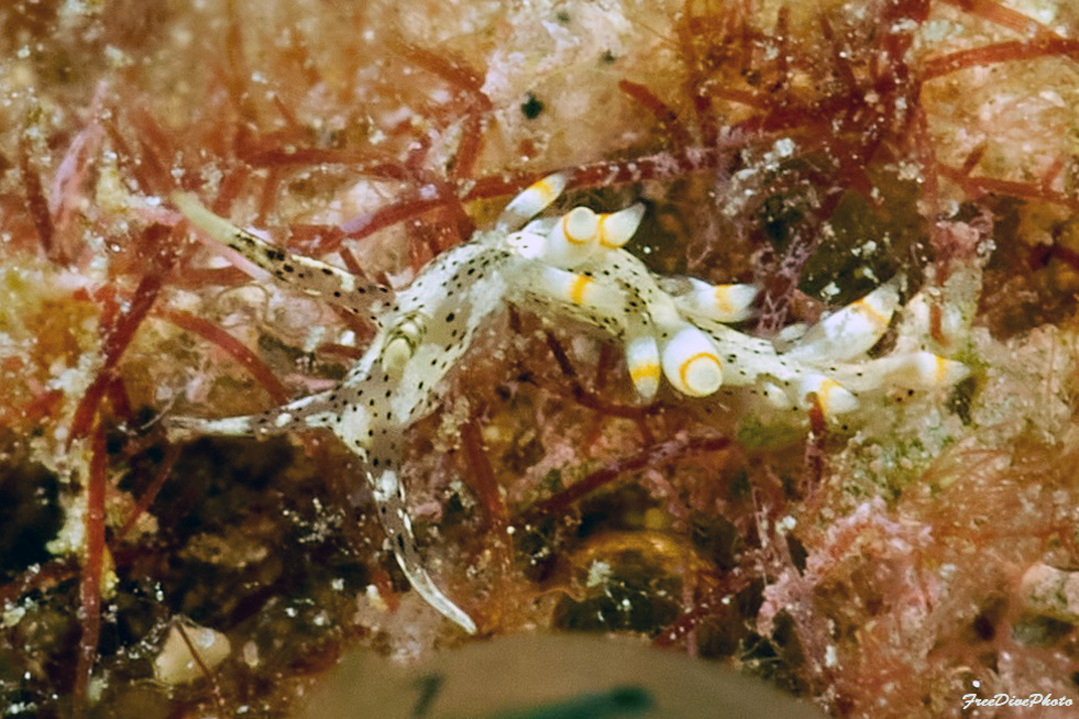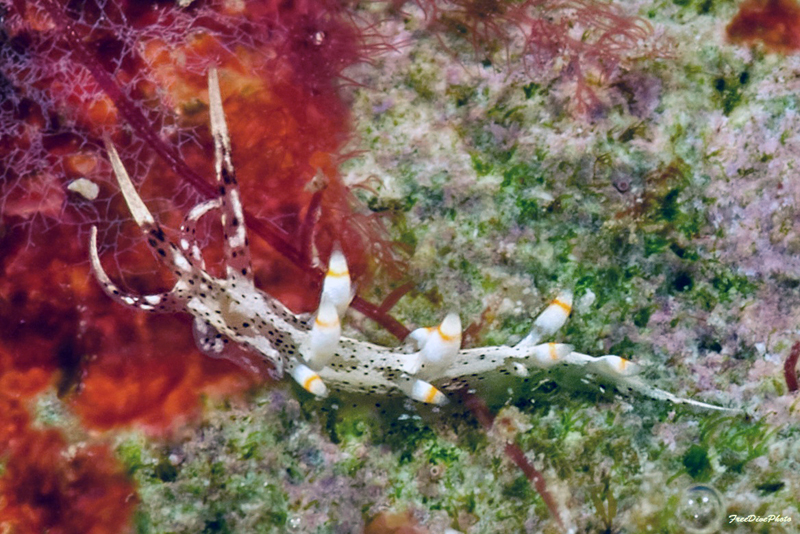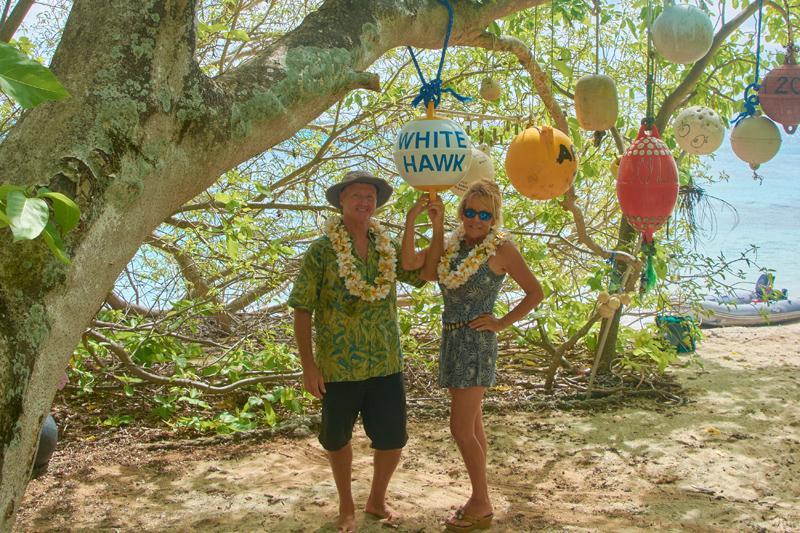 |
Image courtesy of John and Lynette Flynn
Majuro atoll in the Marshall Islands
Image courtesy of John and Lynette Flynn |
Herviella sp. (undesribed) Herviella sp. - could it be new or the rediscovery of a lost species? Well our citizen scientists, John and Lynette Flynn, cruising in the Marshall Islands have come across another unrecognizable species. At first glance John thought the 6mm aeolid, from Majuro, Marshall Islands could possibly be a Tenellia. I sent the photos to Dr. Terry Gosliner, who suggested it was a Herviella, likely H. evelinae, described by Ernst Marcus, naming it for his wife, Eveline du Bois-Reymond Marcus. In the original description he placed the species in the now defunct genus Muessa. After a careful read of the paper, we all decided it could not be as Marcus stated the rhinophores and tentacles were annulate. Curious - annulate tentacles - never heard of such a thing. Incidentally, this species has never been documented since. Terry agreed that this was odd and added - "I am convinced the "annulate" rhinophores described by Marcus is just an artifact of contraction of not relaxing the specimen when preserving it. No aeolid has annulate oral tentacles when alive. Your animal is definitely a Herviella. Check out our book for similar species. The black dots on your animal match those of H. evelinae. I am pretty convinced you have rediscovered this lost species." Reference: Marcus, E.R. 1965. Some Opisthobranchia from Micronesia. Malacologia 3(2): 263-286. Dave Behrens Sammamish, WA 98074 Jul., 2021 Send Dave email at davidwbehrens@gmail.com |
John and Lynette Flynn at the "clubhouse" of the Rongerik Yacht Club.
Rongerik is an uninhabited atoll in the Marshall Islands and to join the club you have to find some debris on the shore,
put your boat name on it, and hang it in the open air clubhouse.

We are John & Lynette Flynn, full time live-aboard cruisers and free-dive photographers who sailed our 46' boat "White Hawk" out of San Diego in 2014 and have been cruising the Pacific ever since. We are currently "stuck" in the Marshall Islands due to COVID border closures, but we have been enjoying our time here hunting Opisthobranchs in shallow water from 0.5 to 5 meters. We are currently shooting with Sony RX100V's in Nauticam housings with CMC-1 wet lenses and SOLA Video Pro lights. Last year we photographed 51 species of Opisthobranch at Rongelap Atoll, and we are currently at 79 species of Opisthobranch photographed at Majuro Atoll, including our first-ever discovery of a previously unknown species, a new Unidentia. We still shoot other animals but we are now full-fledged "nudiholics." Our motto is: "If you don't go - you don't know. If you don't look - you don't see."
Send John and Lynette mail at svwhitehawk@yahoo.com |

Attention all you Sluggers, and you know who you are! The NSSI 2nd edition is now available in ebook PDF and book form . The hard back version will become available Nov. 1st. Both will cost $65 (individually). You will need to jump through a few hoops to get the electronic version as pdf distribution is protected by Adobe ID!! Please read the following to enable reading your electronic purchase! This new 2nd Edition is updated and reorganized, including 185 new species. Among other features, the new edition includes additional photographs of species, an identification key, and an up-to-date classification reflecting the latest evolutionary relationships. The Indo-Pacific represents the largest expanse of tropical ocean in the world, stretching from the Indian Ocean coast of southern Africa and the Red Sea to the central Pacific of the Hawaiian Islands, Easter Island and the Marquesas. This region supports the most diverse marine fauna of any place in the world for most groups of marine organisms. The nudibranchs and sea slugs are no exception to this rule; there are about 3,000 described species of these organisms in the world and at least 40% of these have been found exclusively in the Indo-Pacific tropics. This book illustrates 2,138 Indo-Pacific nudibranchs and sea slugs, including many undescribed species.
|

|
